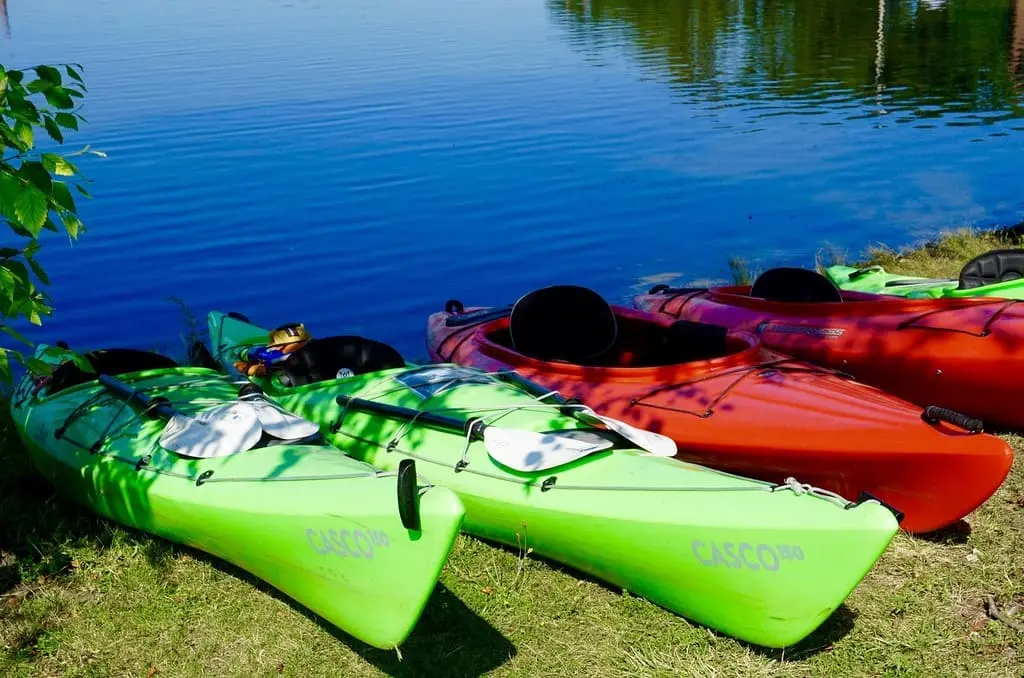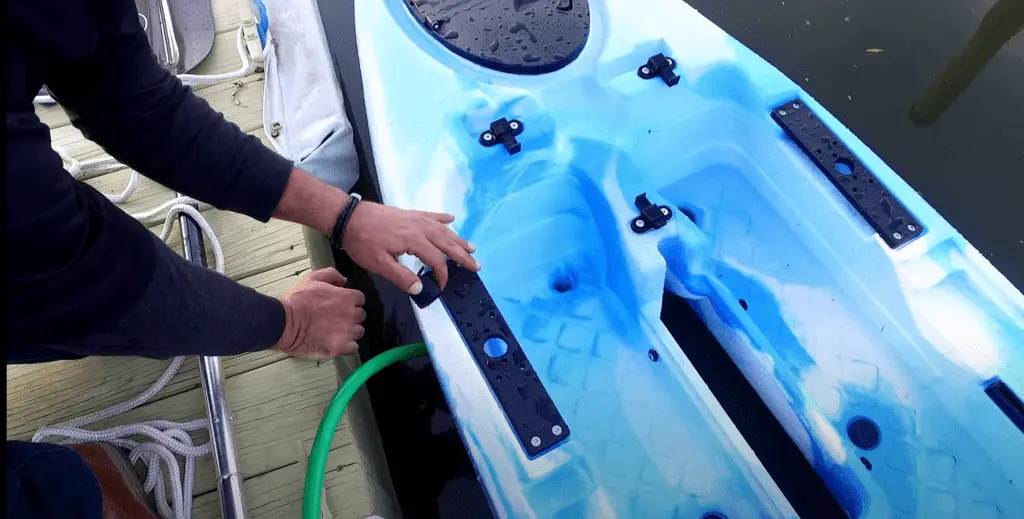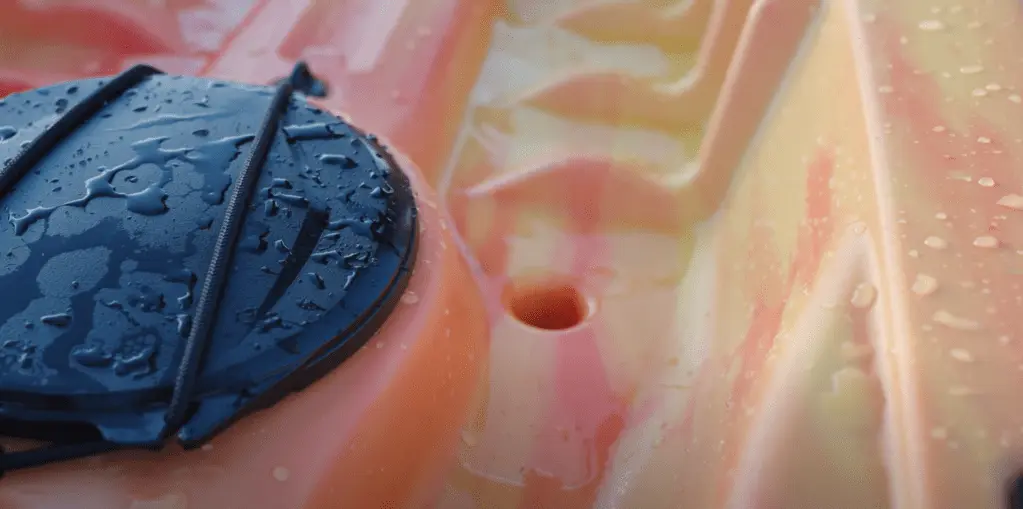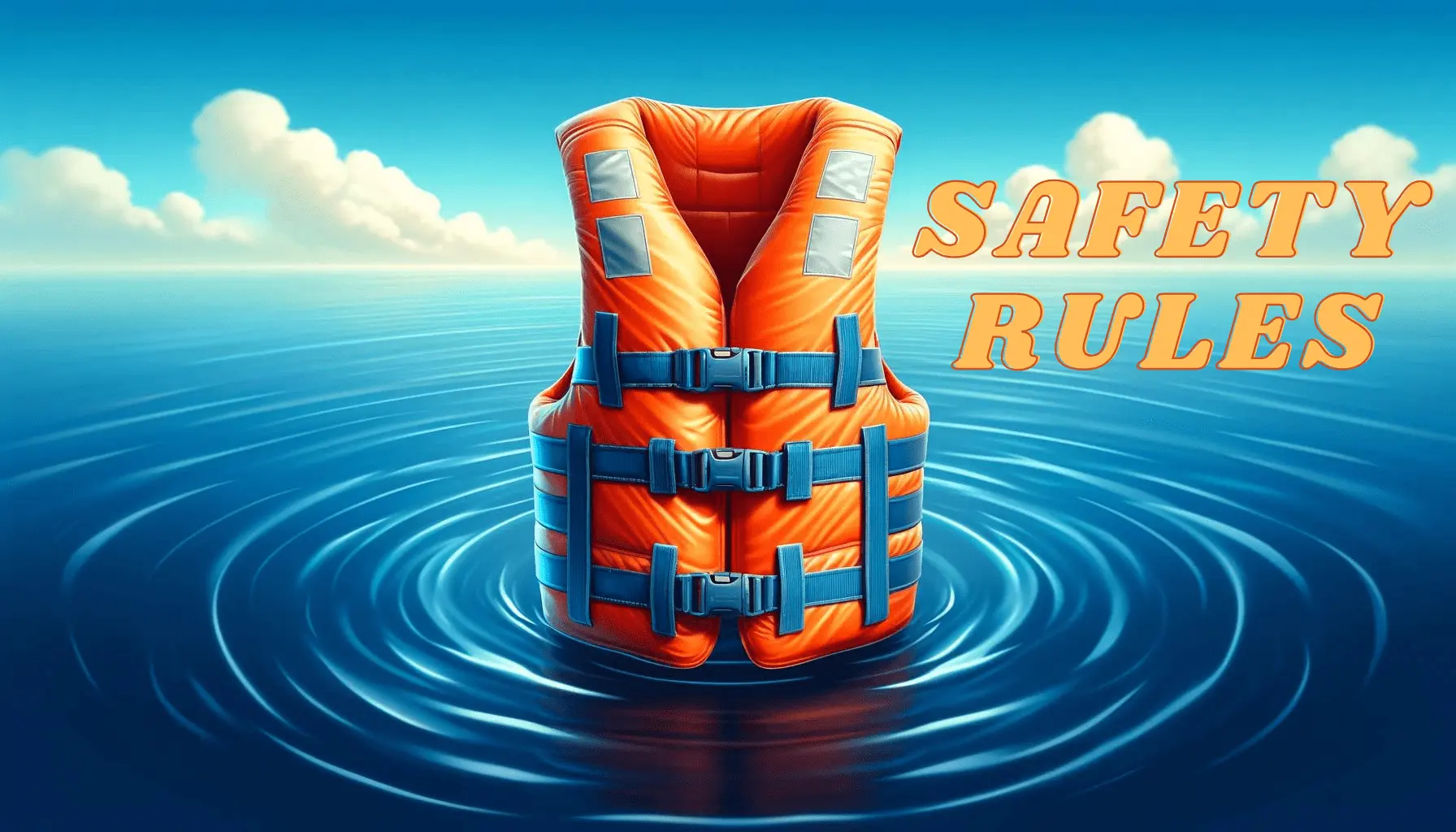Anyone who’s experienced the thrill of kayaking might have noticed something seemingly counterintuitive about their vessel: it has holes. This feature, prominent in sit-on-top kayak models, might initially seem like a design flaw. However, these intentional openings, known as scupper holes, are indispensable components of kayak anatomy. They contribute significantly to kayak buoyancy and water drainage, ensuring the kayak remains afloat and manageable in various water conditions. The incorporation of scupper holes is a thoughtful element of kayak construction, playing a crucial role in both the kayak’s hull design and its overall ability to navigate waterlogged situations effectively.
Whether facing the choppy conditions of white-water rapids or the unexpected splashes from a leisurely day on the lake, scupper holes provide an automatic drainage system that frees the cockpit from unwanted water. This straightforward yet ingenious design feature ensures that your kayak upholds top-notch performance and safety during aquatic adventures. So, while the presence of these holes may seem perplexing at first glance, their function is a testament to the sophisticated engineering of modern kayak design features.
Key Takeaways
- Scupper holes are a crucial feature in sit-on-top kayaks, enhancing kayak buoyancy and safety.
- The design allows for automatic kayak water drainage, keeping the interior dry.
- Kayak hull design incorporates scupper holes strategically for optimal performance and drainage.
- Understanding kayak anatomy and the function of scupper holes can enhance one’s kayaking experience.
- Scupper holes underscore the innovative aspects of kayak design features that cater to enthusiasts’ needs.
Essential Kayak Anatomy: Understanding Scupper Holes
Kayak design features such as scupper holes may seem counterintuitive to those unfamiliar with kayak anatomy, but these elements serve crucial functions in maintaining a kayak’s performance, safety, and buoyancy. Whether you’re paddling through calm waters or navigating challenging waves, understanding the integral role of these kayak components enhances your kayaking knowledge and experience.

Defining Scupper Holes and Their Purpose
Scupper holes, a term often highlighted when discussing kayak anatomy, represent a key structural component, particularly in sit-on-top kayaks. These openings, strategically placed throughout the craft, allow water that splashes onto the deck to drain away, preventing the kayak from becoming waterlogged and cumbersome. As such, they are foundational to both kayak buoyancy and water drainage efficiency.
Structural Integrity and Water Drainage
Kayak design features extend beyond surface aesthetics to encompass critical aspects like structural integrity and water drainage. Scupper holes directly contribute to these areas, supporting the kayak’s frame by allowing it to expel water quickly and effortlessly. This automatic water management system underlines the balance between a lightweight, robust structure and the kayak’s ability to remain buoyant and responsive under varying water conditions.
Location and Distribution of Scupper Holes in Kayaks
The placement and number of scupper holes are not arbitrary but are the outcome of deliberate kayak design features. Typically numbering between 6 to 8, these holes can be found in the footwells, cockpit, and sometimes in the tank well of the kayak, ensuring that paddlers can stay dry and focused on their excursion. Their distribution is aligned with potential water entry points to optimize water drainage and guarantee an even, well-balanced kayak.
In summation, the knowledge of scupper holes and their functional importance in kayak anatomy not only enriches our understanding of kayak design but also helps us recognize the brilliant engineering that allows for the ingenuity of self-draining kayaks. These features showcase the thoughtful integration of kayak buoyancy and water management systems, which are true hallmarks of efficient and innovative kayak construction.
Why Does Kayak Have Holes: Balancing Buoyancy and Drainage
Kayaks are fascinating examples of engineering where design meets function to provide an effective watercraft. The incorporation of scupper holes is an essential aspect that plays a dual role in maintaining both the integrity of the kayak and the safety of the paddler. Let’s delve into the principles that make these features so vital for the optimal performance of kayaks.

The Principle of Kayak Buoyancy With Holes
While it might seem counterintuitive, the unique kayak buoyancy mechanism is heavily reliant on the functionality of scupper holes. These strategically placed openings in the hull enable a kayak to remain buoyant even as water comes on board. Acting in tandem with the law of physics, the scupper holes allow water to exit the deck, essentially leveraging the vessel’s own weight against the incoming water to promote water drainage and preserve buoyancy.
Managing On-Board Water During Kayaking
Managing onboard water is a critical aspect of kayaking, especially in challenging conditions. The self-draining capability afforded by scupper holes serves as a form of automatic water expulsion system, ensuring the kayak’s deck remains navigable. This feature of kayak construction is particularly beneficial when hitting rough waves or during sudden water entry, safeguarding against flooding and potential capsizing.
Kayak Design Features for Optimal Performance
Kayak manufacturers invest considerable effort in delivering kayak design features that enhance performance without compromising on safety. From the shape of the hull to the placement and size of scupper holes, various elements are fine-tuned to enhance water evacuation efficiency. In addition, paddlers can benefit from kayak maintenance tips and customizations such as adding or removing scupper plugs according to the kayaking environment, further personalizing the water drainage process to fit their unique needs.
Proper maintenance and understanding of your kayak’s unique features are essential for a safe and enjoyable experience on the water.
Kayak Maintenance Tips: Plugging and Unplugging Scupper Holes
For kayakers, managing the water inside the boat is a delicate dance between maintaining a dry deck and ensuring proper water evacuation. The innovative kayak design features that include scupper holes facilitate an effective kayak water drainage system. However, the use and management of scupper plugs are a lesser-known art form of kayak maintenance tips that can significantly enhance your paddling experience.
Here’s a focused look at why and how kayakers should plug or unplug these essential components:
- Scupper plugs can be inserted to prevent water ingress, keeping your kayak’s deck dry, which is especially beneficial in calm and flat waters.
- Unplugging scupper holes allows for quick drainage when dealing with on-deck water accumulation due to rain or waves.
- Adjusting the plugs according to the water conditions and personal comfort can improve kayak handling and stability.
By adjusting scupper plugs based on weight distribution and environmental conditions, kayakers can achieve an optimal balance between speed and stability. For instance, plugging the holes at the rear can raise the end of the kayak, thereby increasing speed and reducing drag. Conversely, unplugging them enhances the kayak’s stability in windy conditions or rough waters by lowering its center of gravity.
- Speed Optimization: Use plugs in the rear to minimize water entry and improve vessel speed.
- Stability in Winds: Remove plugs to lower the kayak’s profile and stabilize it against gusts.
- Custom Drainage: Modify the plugs to allow partial drainage, maintaining a balance between dryness and buoyancy.
Mastering the use of scupper plugs is a skill that, once honed, allows kayakers to tailor their experience to personal preferences and changing environmental conditions. It’s a simple, yet effective, element within the broader scope of kayak maintenance tips.
Whether you’re a seasoned kayaker or new to the sport, understanding the interplay between scupper plugs and kayak water drainage is essential. Keeping these tips in mind will help ensure both the longevity of your kayak and the comfort of your adventures. The key takeaway: plug in for a dry deck, unplug for water drainage, and always be mindful of the balance that suits your particular kayaking conditions.

The Role of Scupper Plugs and Hull Design in Kayak Safety
Long celebrated for facilitating enjoyable and safe kayaking experiences, scupper plugs and the innovative kayak hull design have evolved significantly. Understanding the interplay between these features and their impact on kayak safety is not just about comfort—it’s about ensuring an efficient and hazard-free journey.
Understanding Scupper Plug Functionality
Scupper plugs serve as guardians of the kayak’s interior, allowing paddlers to customize the drainage based on conditions. These small yet mighty devices, generally constructed from flexible, durable materials, insert snugly into the scupper holes that are integral to the kayak’s safety framework. By adjusting scupper plugs according to the water environment and the kayak’s load, users can enjoy a tailored experience that optimizes performance without compromising on safety. Their function becomes crucial in managing the kayak’s buoyancy and preventing waterlogging, which are essential to maintaining control in varied aquatic settings.
Kayak Hull Design for Enhanced Water Evacuation
Behind every reliable kayak is an ingeniously crafted hull design, primed for peak water evacuation. The hull’s shape and contours dictate how water interacts with the kayak, influencing stability and speed. Modern kayak hull design integrates concepts from fluid dynamics to ensure that kayakers can rely on their vessels to self-bail effectively, often without necessitating movement. This characteristic is especially advantageous when stationary in the water, preparing for the next rapid or casting a line in hope of a catch.
Kayak Water Drainage Mechanisms
Kayak water drainage mechanisms, which include scupper holes and hull design, collaborate tirelessly to deflect water away from the craft, safeguarding both the paddler and their gear. These features play a critical role in the kayak’s ability to handle water ingress, whether due to environmental factors like rain or the occasional wave splash. By swiftly channeling water out of the kayak, these drainage systems help prevent the risk of capsizing, thereby contributing to an essential aspect of kayak safety—the paddler’s peace of mind.
FAQ
Why Does a Kayak Have Holes?
Kayaks, particularly sit-on-top models, have intentional openings known as scupper holes. These holes are critical for structural integrity and serve as water drainage systems, allowing the kayak to remain buoyant and stable by automatically clearing any water that enters the vessel.
What Are Scupper Holes and What Is Their Purpose?
Scupper holes are integral features in the anatomy of a sit-on-top kayak, designed as self-bailing systems. Their main purpose is to ensure automatic drainage of water that enters the footwells, cockpit, or tank well, thereby contributing to the kayak’s buoyancy and safety.
How Do Scupper Holes Affect the Structural Integrity and Water Drainage of a Kayak?
Scupper holes assist in maintaining the structural integrity of the kayak by preventing water accumulation which can cause instability and potential safety risks. They also facilitate water drainage, which is essential when navigating through waves or during inclement weather.
Where Are Scupper Holes Located and How Are They Distributed in Kayaks?
Scupper holes are typically found in the lower points of a kayak, such as in the footwells, cockpit area, and tank well. The average sit-on-top kayak includes 6-8 scupper holes strategically placed across these sections to optimize water drainage and maintain the craft’s overall buoyancy.
What Is the Principle of Kayak Buoyancy With Holes?
The paradoxical principle of kayak buoyancy with holes hinges on the functionality of the scupper holes, which permit water to drain out while keeping the kayak afloat. Even when stationary, kayaks are designed to bail water effectively and maintain buoyancy, thanks to these innovative design features.
How Should I Manage On-Board Water During Kayaking?
On-board water can be managed through the use of scupper plugs which allows kayakers to control the drainage based on conditions like weight distribution and water conditions. Additionally, kayak designs with optimal hull shapes help manage water evacuation effectively without requiring the kayak to move forward.
What Are Some Kayak Design Features for Optimal Performance?
Key design features for optimal kayak performance include a well-designed hull for stability and speed, strategic placement of scupper holes for efficient water drainage, and the use of scupper plugs for optional water flow control, all of which work together to ensure a dry, safe, and enjoyable paddling experience.
How Do I Choose When to Plug or Unplug Scupper Holes?
Deciding when to plug or unplug scupper holes is based on various kayaking conditions. Plugs can be used when you want to keep the deck dry and prevent water from splashing in, such as calm weather conditions or while carrying a heavy load. Unplugging the scupper holes is recommended when water needs to be drained quickly, such as during rain, or when navigating through waves.
Why Are Scupper Plugs Important for Kayak Safety?
Scupper plugs are important for kayak safety because they offer the flexibility to adjust water drainage based on the environmental conditions and the paddler’s needs. By allowing water to be cleared from the deck, they help prevent the kayak from becoming too heavy and unstable, which could lead to capsizing.
How Does a Kayak’s Hull Design Enhance Water Evacuation?
A kayak’s hull design plays a crucial role in enhancing water evacuation by promoting stability in the water and facilitating the flow of water out through the scupper holes. Some hull designs enable the kayak to self-bail efficiently, contributing to the vessel’s safety and performance.
What Are the Different Kayak Water Drainage Mechanisms?
In addition to scupper holes, kayaks may employ other drainage mechanisms like bilge pumps and sponges. These tools assist in removing water from areas not equipped with scupper holes, such as closed-deck kayak models, and help in keeping the interior dry during paddling activities.



